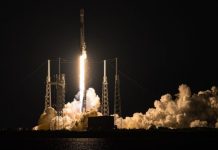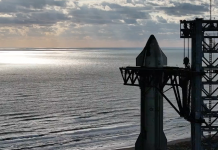SpaceX will replace Starship SN11 engine before re-burning and launching
At the SpaceX site in South Texas on March 23, firing tests of the Starship prototype SN11 took place in preparation for launch to an altitude of about 10 km. Due to the short burn, SpaceX identified problems with one of the Raptor’s three engines, so that the launch will be somewhat delayed.
SpaceXAccording to reporter Michael Baylor, SpaceX will conduct a second static fire test, and the problem engine has already been removed for repair. According to him, a fire test can occur as early as Friday if you focus on the schedule for blocking the surrounding roads.
In turn, Ars Technica photographer Trevor Mahlmann posted on his Twitter video and photos of the delivery to the site and installation of the Raptor # 46 engine in the Starship SN11 prototype to replace the problematic one. Many people point out that Raptor engines are currently not very reliable: suffice it to recall that in the SN9, before launch, the company was forced to replace two engines and, in the case of the SN10, also went to replace one.
According to Elon Musk, many changes have been made to SN11 to correct deficiencies identified during previous tests. He explained that the SN10 prototype exploded after landing because the engines ran out of power due to helium leaking from the fuel tank. Recall that on March 3, SpaceX launched its Starship SN10 spacecraft to an altitude of 10 kilometers and managed to land the car, although the rocket exploded a few minutes after landing. This mission followed two other launches of Starship SN8 and SN9 to the same altitude – the prototypes were able to take off and perform the required maneuvers, but they crashed on landing. The company hopes SN11 will make a successful return and will not collapse during or after landing. By the way, recently, we saw the first Super Heavy prototype assembled, the BN1 (Accelerator 1).




